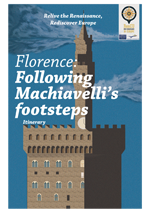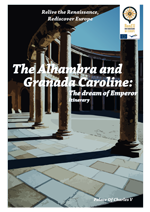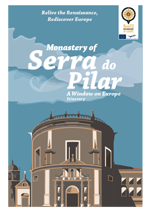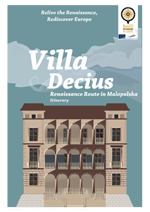Reason and Imagination
Reason, and technical/scientific reason in particular, was long considered the factor that best connotes the modern Western World; but the tragedies of the 20th century, most notably the extermination camps and the atom bomb, have clearly shown the inadequacy of that model. Reason must also take account of what differs from itself, namely, imagination. In exploring the relationship between reason and imagination in the Renaissance, we can also reflect on the complex problems of contemporary Europe.
For the Renaissance mind, reason was not incompatible with the imaginary plane, as shown by the close ties between astronomy and astrology. Politicians or rulers who strive to organize their people rationally must relate not only to its religion, but also to its superstitions, prophecies and whatever else may be believed. Regardless of whether a politician believes something or not (and for the most part, he firmly believes it), he will utilize it rationally to obtain consensus.
Imagination, viewed as the imaginary and symbolic level, can play an active role in the consolidation of power (civil, political or religious) or in the cohesion of a social group; and by so doing it serves a wholly rational function, of which its promoters are often fully aware. This is, in fact, the symbolic-imaginary function of the visual representations (paintings, statues, palaces, piazzas, etc.) often commissioned by powers that feel the need of consolidation and acknowledgement.
Related itineraries
![]() Following Machiavelli’s footsteps
Following Machiavelli’s footsteps

The relationship between reason and imagination can be a key for interpreting the Florentine itinerary from many points of view. First of all, through the contrast between Machiavelli and Savonarola, where the lucid analysis of the former acknowledges the importance and the political effectiveness of the latter's imaginative fantasies. The link between reason and imagination appears above all, however, in the symbolic use of art in such places as Piazza della Signoria and Palazzo Vecchio; it often served as symbolic legitimation of the various regimes that succeeded one another in Florence, whether that of the Medici or of the republicans. Insofar as art possesses in these cases a symbolic-imaginative value, its function is entirely rational.
![]() The Alhambra and Granada Caroline: the dream of Emperor
The Alhambra and Granada Caroline: the dream of Emperor

In the Alhambra we can appreciate a rich iconography that possesses strong symbolic value, and serves a wholly rational "political" function. Numerous representations of imperial power are found in the Palace of Charles V and in his apartments, while various symbols of religious power are also present, absolutely necessary in a country occupied until a short time before by populations of the Islamic religion. The church of Santa Maria, built in the heart of what was once the city of Alhambra, like the Cathedral and even the Madrasa, are intended to symbolically represent and bear witness to the process of Christianizing the area.
![]() Monastery of Serra do Pilar: a window on Europe
Monastery of Serra do Pilar: a window on Europe

The itinerary through the Monastery of Serra do Pilar reveals a continuous interweaving of reason and imagination, through, for example, the tension between the rational structure of the Renaissance buildings (with their studied proportions) and their symbolic value (linked also to the sphere of astronomy); and with the harmonious proportions of the building, intended to represent the perfection of Christ's body.
![]() Renaissance route in Malopolska
Renaissance route in Malopolska

Following the itinerary in Malopolska we can see how reason and imagination intertwine in their symbolic use in art and culture both in the civil and the religious fields: just think of the Town Hall in Tarnów, symbol of the city's independence, or the imposing tombs commissioned to Italian artists by great lords such as Tarnowskis or by Prince Ostrogski as a testament to their position and power.